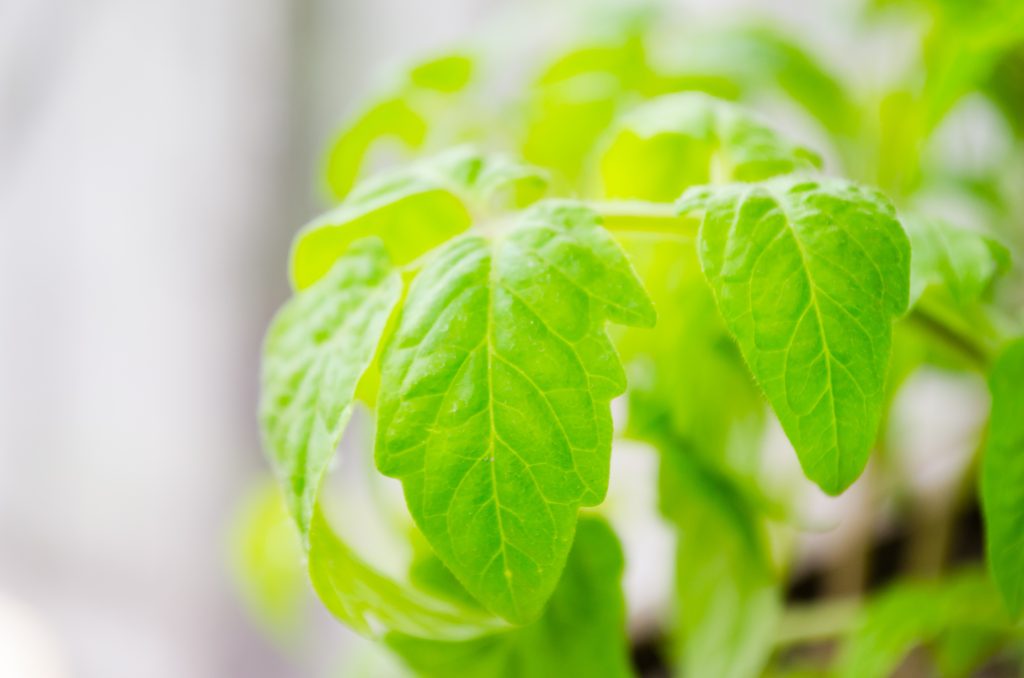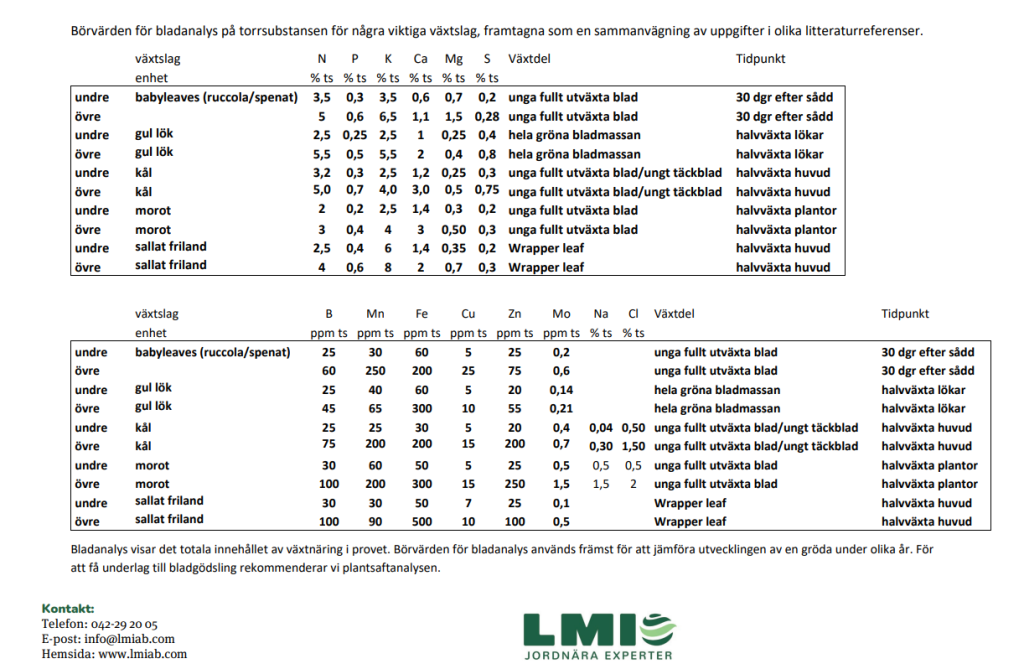What is a Leaf Analysis?
Leaf analysis measures the total amount of plant nutrients in the leaves. The result of the analysis shows whether there is a deficiency or surplus of the different plant nutrients. A leaf analysis is most useful in perennial crops, such as fruit and berries, to compare nutrient uptake between years. The analysis shows how much nutrient the leaf has stored up to the time of sampling. This type of plant analysis is often used in scientific studies. We do not give advice or recommendations on the results of leaf analysis, but you will find set points for some plant species below.
Taking a leaf analysis in combination with a soil analysis will give you a better overview of what nutrients are available in the soil and what the plant can take up. Even if the soil test result shows that there is enough of a certain nutrient in the soil, other factors such as soil structure, poor drainage, pH value, moisture content, or nutrient imbalance can affect nutrient uptake and show deficiencies in the leaf analysis. A leaf analysis can thus help to detect quality deficiencies and prevent crop failure in good time.
Substances included in the analysis: aluminum, boron, phosphorus, iron, calcium, potassium, silicon, copper, magnesium, manganese, molybdenum, sodium, sulphur, zinc, total nitrogen and dry matter. Total carbon can be analyzed as an additional analysis. The substances are expressed as mg/kg DM.

Sampling instructions Leaf analysis
Leaf samples can be taken on overcast days at any time of the day. On sunny days, the sample should be taken early in the morning when the plant is juiced. Make sure that your hands are clean and not smeared with skin cream. Pick the youngest fully developed leaf with petiole. Pick from a minimum of 10 plants from different parts of the field to be sampled. If any part of the field deviates, it should be considered to take a separate sample from there. Pick leaves from different parts of the area to be sampled. Sample size should be at least 100 grams. Put the sample in a plastic bag and seal immediately after sampling. Protect the sample from sunlight and store in a refrigerator. Avoid taking the samples at the end of the week if the samples are to be sent, so that the sample does not risk being left in the post over the weekend.
Exchange values for Leaf Analysis

Consignment note
Attachdelivery notewith sample number/name, plant species and stage of development and indicate if it is from organic farming. Remember to include the name and billing information (including organization number/personal number), as well as the e-mail address of the persons to whom we will send the results.
Download the delivery note!
Response time
Analysis results for Leaf Analysis are provided by e-mail 10 working days after the sample reaches LMI.

